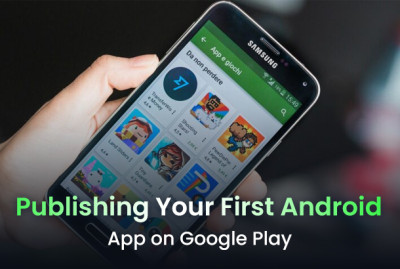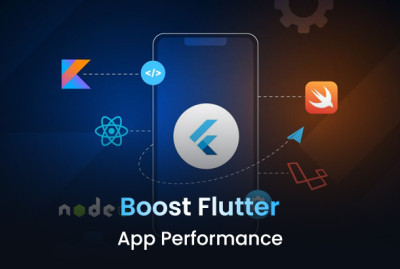Scope for Android Application Development in 2020
Mobile application development one of the fastest growing IT career paths in this decade.
India stands second for internet users after China and expected to grow 730 million in 2020. According to market research firm techARC, the number of smartphone users in India was 502.2 million in Dec 2019 and expected to grow in 2020. Companies are more focusing to Hire Android Application Developers in India.
With the increase of the market share of Android users in India, companies are now getting into android application development.
The Scope of android application developers has increased rapidly and will always increase in the coming years in India. Big companies like Samsung, Oppo, Mi, Vivo, One plus are launching mobile phones with new features update every year, thus increasing the demand for the android application developer.
It is hard to imagine any single person in this world without using a mobile phone in this 21st century. It’s no secret that mobile applications are an integral part of our lives now. From online shopping to ordering food and playing games, chatting with friends there is an app for almost everything.
E-commerce companies like Amazon, Flipkart, Zomato, Swiggy, Lens Kart, OYO, and Makemytrip are running most of their business through mobile applications. They require knowledgeable app developers who can take responsibility to look out for bugs in the application and fix those bugs.
The salary offered to Android app developers is highly satisfied and can grow as they become more experienced and more skillful. According to payscale.com, the average salary of an android developer in India is Rs. 361,928 per year.
Reason to Learn Application Development
There is plenty of reason for students to learn Application development
Open Source
Android is an open-source operating system designed mainly for smartphones and tablets.
It helps the developer to register once and then they can develop apps and earn. On the Android platform, the one-time registration fee is $25 to get a developer account on the Google play store which helps you to publish multiple android apps in a single account. For paid apps, Google charges 30% commission as an aggregator and for free apps, they are distributed free among all users over the world.
1. Huge Market size for Business
The mobile application market is the fastest growing app market in India. Android developers also can publish their apps on other platforms like SlideME, Opera Mobile Store, AppBrain, 1Mobile, Aptoide. Most of these platforms or markets are free.
India has recognized IT hubs globally.
2. High Return on Investment with Low Cost and efficiency
Application Developers use the Android SDK tools and build an application. They need to pay only once for the registration amount. Thus end-users are benefited using interactive apps and the company gains a high return on investment...
3. Larger User Base in the active user
Android has a large number of users in the world and it continues to grow on day by day. Android allows you to develop apps and games for millions of android users. Thus reaching a larger number of users gives you the perception of the market.
4. Career Opportunities for Android Developer
The market size in android is large thus job scope for android mobile app development is increasing day today in India. Developers who are knowledgeable and experienced will have a good salary package in this industry. For experienced developer’s salary lies between Rs 1.2 to 5.6 lakh per annum.
Scope of Android App Development in IT & Other Sectors
1. Banking Industry
Indian Prime Minister Announcement of Digital India initiatives bought a lot of changes in India. With Cashless transaction in India has increased online banking transactions, with this increase banking application is been in vastly demanding. All the banks in India are ready to pay high salaries to experience and skillful developers. Maintaining the banking app needs many security checks like customer’s sensitive information which should not be leaked to the public. Apps like Paytm, Bhim app, PhonePe app, google pay are being in demand nowadays.
2. Educational Industry
With digitalized India initiatives, many educational industries are getting updated with the latest online courses. Nowadays it’s been easy to learn with online courses where ever you are you can access the online course and learn new things in this competitive market. An application like Udemy, Byju’s, TED, Topranker, NCERT, Simplilearn.
3. Gaming Industry
Who doesn’t like to play games? Mostly the game is liked by Children and Youngster. PUB G game has become rapidly popular among youngsters in the world these days. A Demand for the gaming sector for Android mobile application is also booming nowadays in India. The gaming sector is giving the highest Return compare to any industry in India. Game development example like candy crush, Ball Pool, Clash Royale
4. E-commerce Industry
The E-commerce industry in India was expected to do sales of $120 billion in 2020. Mostly customer like to buy through mobile apps as many big companies like Amazon and Flipkart usually gives huge discounts on apps and time-consuming.
5. Social Media Industry
Social Media is another platform that is getting ample benefits through android applications. World’s biggest organizations such as Facebook, LinkedIn, Instagram, Twitter, Pinterest Snapchat are famous examples that have utilized an android platform for their business profits.
6. Media & Entertainment Industry
The future of android mobile app development regarding the media & entertainment industry seems to be very effective. To get sports updates, watch TV serials, listen to music. People using smartphones from around the world prefer mobile apps to avail of all such benefits. Some of the android applications for media & entertainment are Wynk, Soundcloud, Saavn, IMDb, Hungama, Google Play Music, Cricbuzz.
7. Freelancing Business
The scope for android app development is not bound to the industry of e-commerce, education, social media, gaming, banking & finance. Freelancing is another aspect area where an individual can utilize his skills and make personal profits.
Read More







































































































































































































































































































(0) Comments
Write a comment